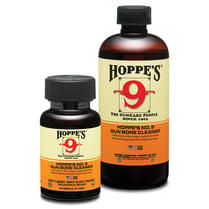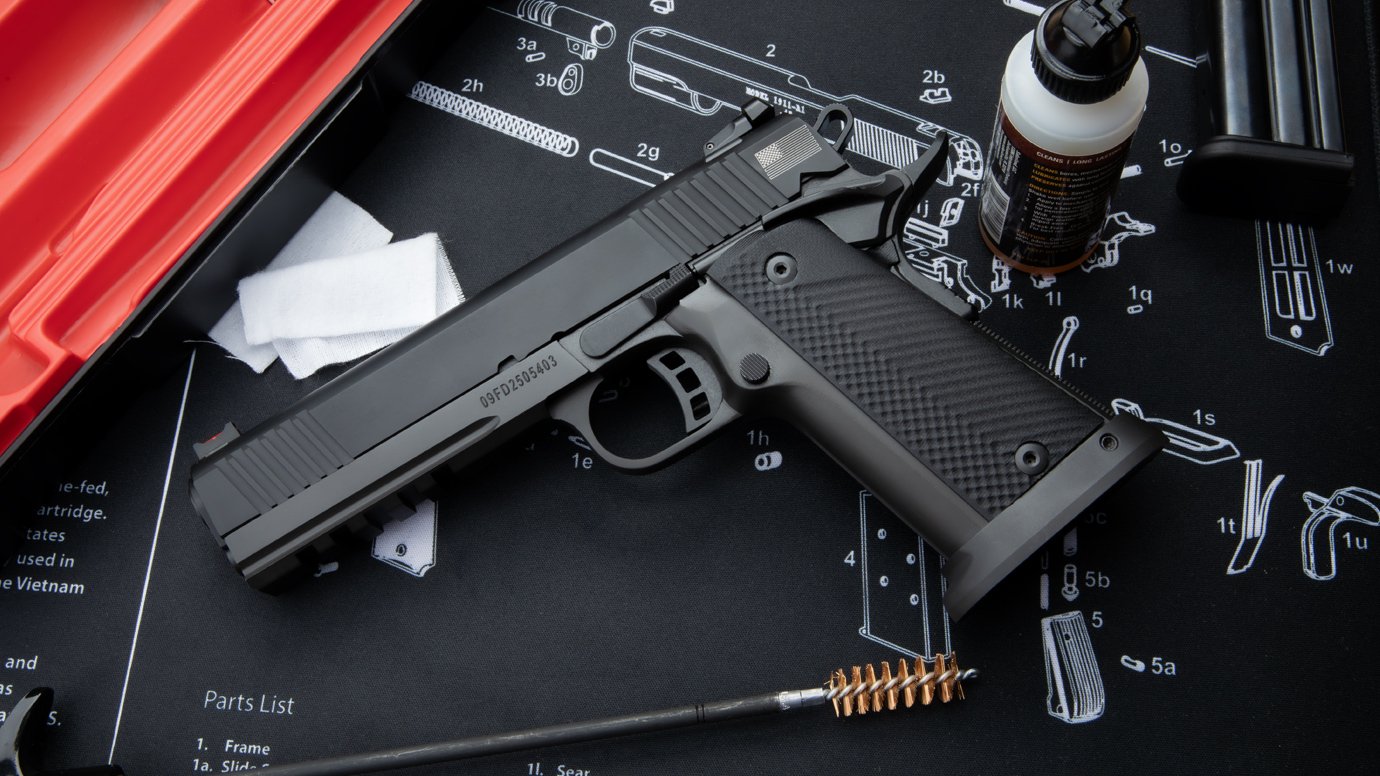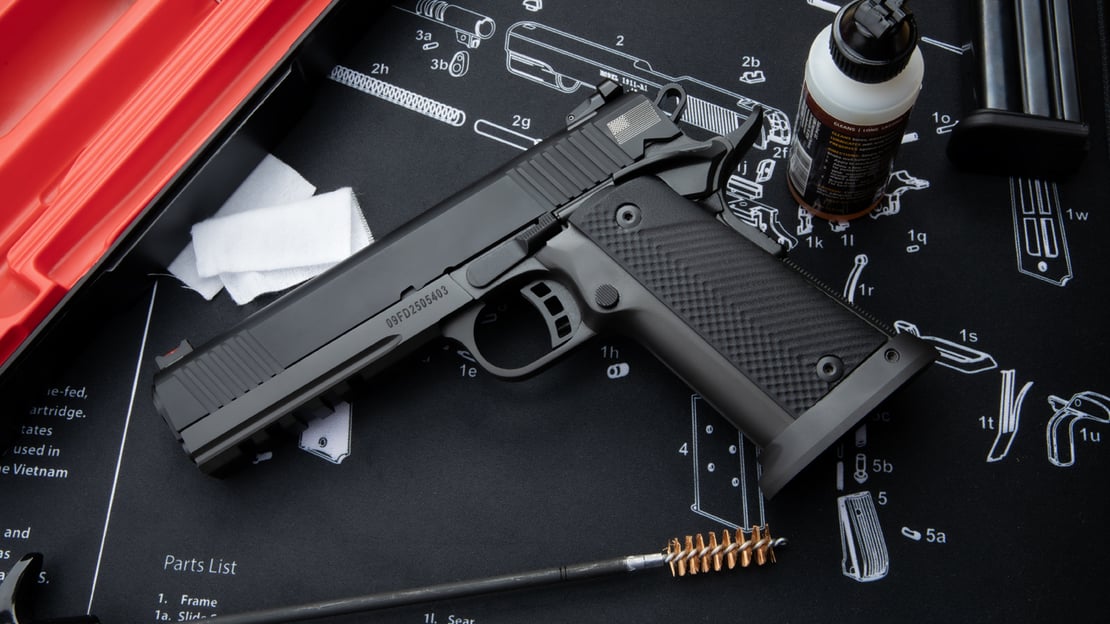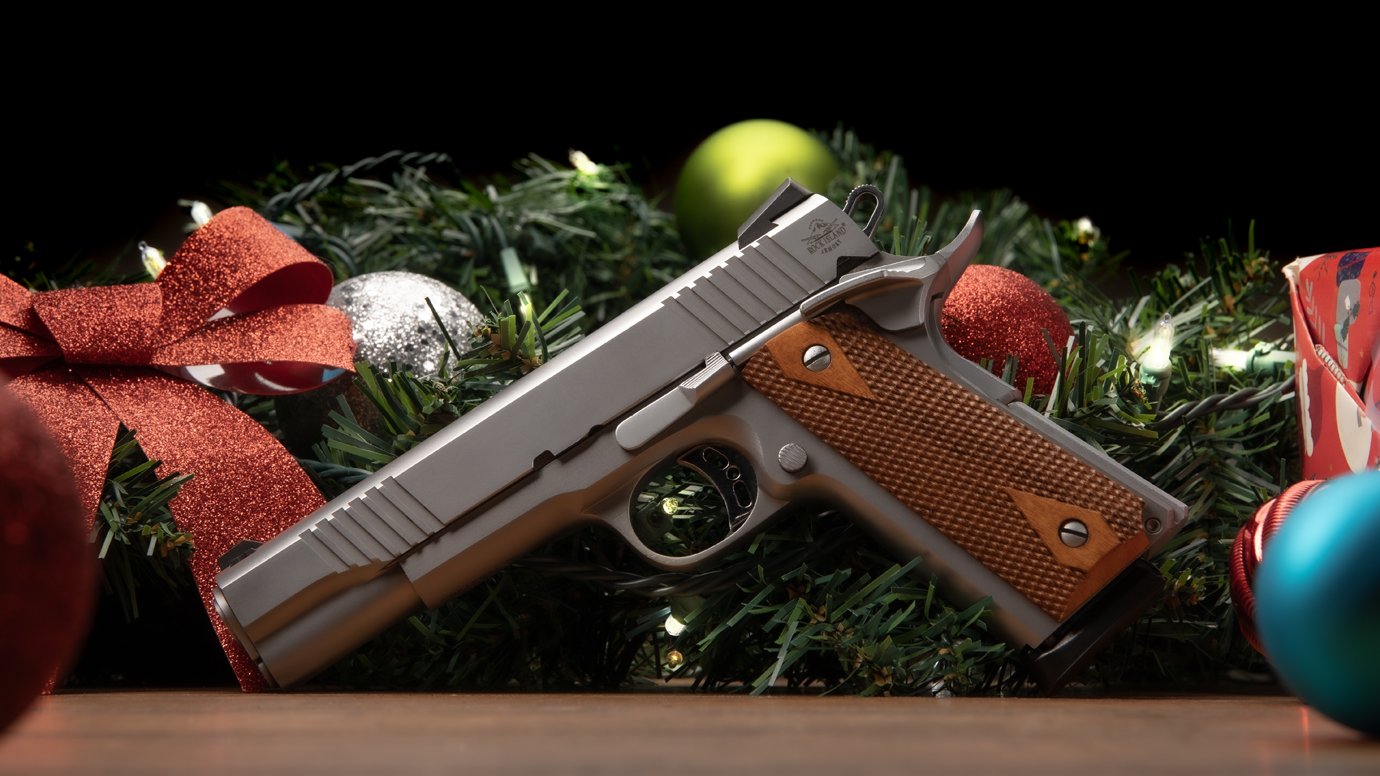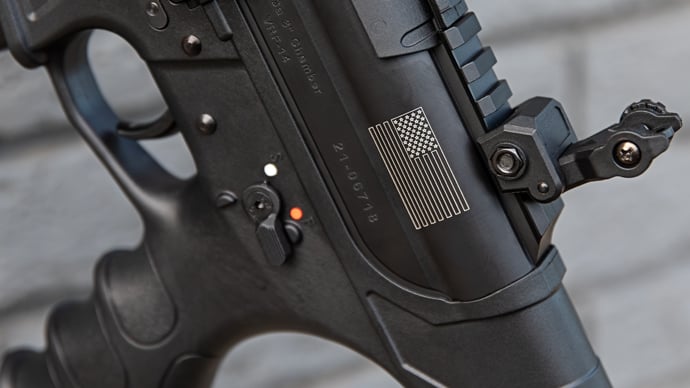What You Need to Know About Maintaining Your 1911
Posted by Team Armscor on Jul 23, 2020 10 Minute Read
The 1911 is, without a doubt, one of the most popular pistol platforms in the world—and with good reason. The gun's simple and durable design make both using and maintaining the firearm a painless process. Without properly understanding the genius behind the gun's construction, it can be difficult to understand what separates this platform from its competitors.
Read on for more on why 1911s are maintenance friendly and how to care for those in your collection.
Why They're Easy to Maintain
It's Easy to Disassemble/Reassemble
One of the best aspects of the 1911 is the ease of disassembling the gun. A simple field-strip or complete disassembly can be performed relatively quickly. Hopefully, the only time you’ll need to disassemble your gun is during cleaning.
The most important part to clean is the barrel. You should also apply lubricant to any areas that experience friction with the slide or other parts. A routine cleaning after each range outing is recommended, which only requires you to do a simple field-strip.
To learn how to perform a complete disassembly of your Rock Island 1911, watch this video. You can also see how we recommend cleaning your 1911 pistol.
It Has Fewer Parts
Another aspect of the 1911 that makes maintenance easy is the lower number of parts and the simplicity behind how those parts work together, as compared to other, more complex firearms. Need proof? Take a look at the inner workings of the Russian AN-94, and compare it to the 1911. As far as maintenance goes, the 1911 seems like the easier of the two.
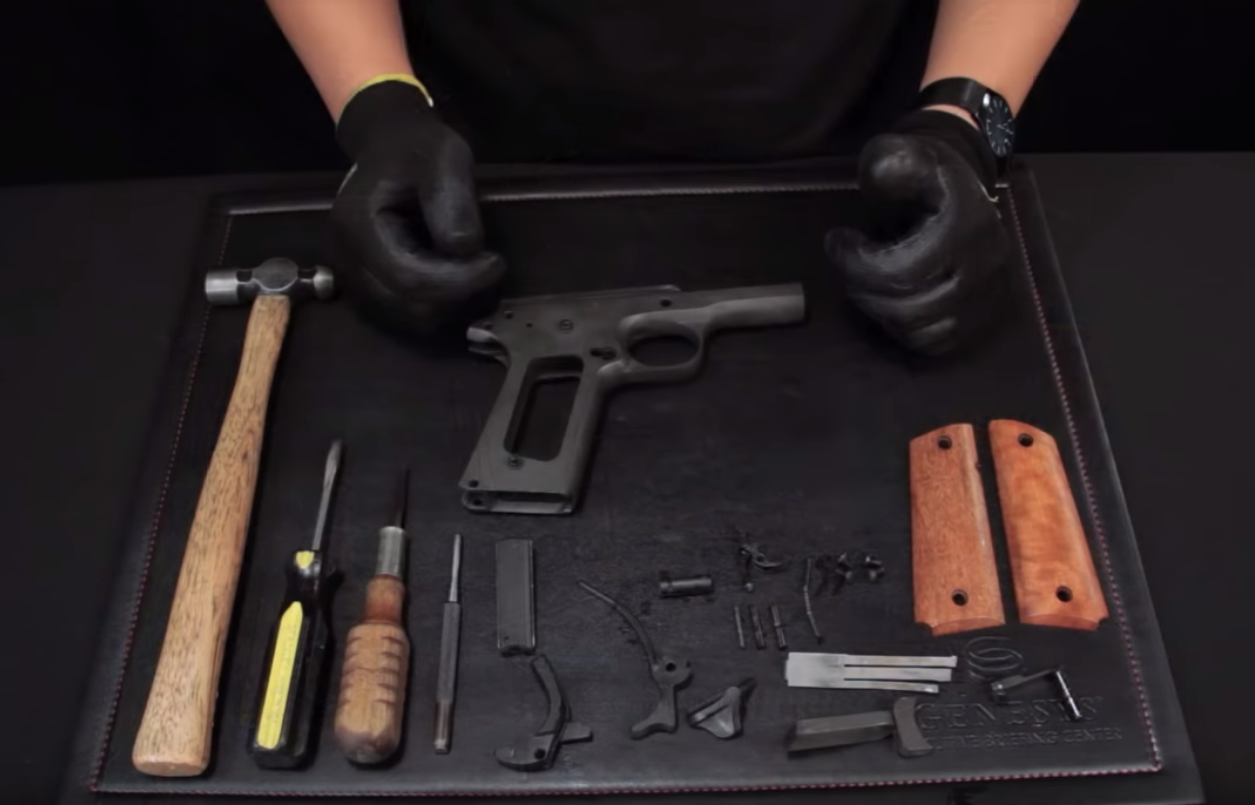
The more complex the system, the harder it will be to maintain. The 1911 earned its place as a prominent, long-time service pistol for militaries and law enforcement around the world, thanks not only to good firepower but also to its intuitive, easy-to-maintain design.
It's Proven
If you’re looking for a historical, proven platform that’s easy to use and maintain, then the 1911 is for you. A good starting point, without going for broke, is the Rock Island GI Standard. Or if you prefer a compact package, you should consider the 3.5” barrel option.
How to Maintain Them
The methodology to cleaning a 1911 is just like anything else—if it's worth doing, it's worth doing right. That's why it is so critically important to approach your 1911 maintenance with a sense of diligence and attention to detail. Without these, you stand to damage your firearm's internals.
Unload It
Remove the magazine, and rack the slide, using the slide stop to hold it open while you verify that the chamber is empty. Always remove the magazine first, as a full magazine will fill an empty chamber. Do not assume that it has been cleared. Remove the magazine, and check the chamber.
(Actually) Read the Manual
Every new 1911 is shipped with a manual, or at least a CD or note card with a web address to find the manual. And you need to read it, even if you know the USGI M1911A1 manual and can recite it from memory. As new technology in materials, design changes or machining develops, changes can occur. Reading the manual takes as much time as drinking a cup of coffee and can prevent a lot of easily prevented mistakes.
Recoil the Spring Plug First
It does not matter what your father, grandfather, drill sergeant, armorer or even that old guy at the gun store told you - always remove the recoil spring plug first. This releases all tension in the parts of the gun you will be cleaning during a standard field strip. With the slide in place, there is only one direction the spring plug can go, and that is controlled by your hand. It is the first item out and the last item back in. (Unless you have a 1911 with a bull barrel and reverse plug, in which case, repeat Commandment No. 2, because there are different kinds.)
Brush from the Breech
The business end of the barrel is finished a certain way. Even on the cheapest of 1911s, there is a crown on the barrel that manages the release of gas pressure behind the bullet as it exits the barrel. A metal rod or boresnake guide can damage the fine edges of the crown causing uneven wear. Over time, this can cause your fine, accurate weapon to be inaccurate or even erratic. By brushing from the breech, you prevent this issue entirely.
There is No “Best”
Cleaning products are pretty universal. Gun-makers suggest specific products based on one of two things - either they have marketing agreements with companies, or they use the product in their own shops. If you must switch between products, perform a detail strip, clean and re-lube with the new products. While most products are fairly inert or even compatible, some are not. No need to risk it if you don’t have to. No need to order something special if something usable is on hand. There is no excuse for waiting until you can order your favorite, specially scented, high-speed/low-drag blend of vegetable oils.
Use Proper Ventilation
Use Oil
Not grease. Not WD-40. Oil. And use it sparingly. Grease can solidify and gum up due to temperature changes and foreign matter becoming trapped within. What is slippery to your skin is sticky to dust, sand, dirt and unburnt powder. Penetrating oils like WD-40 are wonderful for their intended purposes but can penetrate your ammunition and cause misfires or duds.
Properly Lube
Under-lubricating a weapon causes friction where we do not want it. This leads to premature wear and damage to the gun. Over-lubrication can cause the same issues as using grease or penetrating oil, gumming things up, collecting debris or contaminating the ammo.
Wipe it Down
When you have finished cleaning, lubing and re-assembling your 1911, wipe it down with an oily rag or a silicone-impregnated cloth. The chemistry of the human body is not known to be gentle on firearm finishes and can penetrate Parkerizing and ruin bluing. The final wipe will leave a light coating of oil, or a fresh application of silicone, on the surface of the weapon, helping to prevent damage to the finish.
Don’t Clean Too Often
Guns are machines. The 1911 was designed to function in a wide variety of terrain and climate and only cleaned when absolutely needed. A properly maintained 1911 can be fired with black powder loads if needed. Even high-cost weapons with extremely exacting tolerances do not need to be cleaned very often. Over-cleaning can cause those internal dimensions to change by thousandths of an inch, reducing accuracy and possibly even functioning life of the firearm. Refer to the manual, and keep a regular maintenance schedule.
Ultimately, you are the only one who can determine how well your 1911 is cared for. If you choose to take the time needed to care for it properly, it is sure to return the favor. If you neglect your firearm, then it may let you down when you need it to perform the most. The simplicity of the gun's design greatly reduces the amount of effort it takes to maintain, so do yourself a favor and take the time to care for your handgun properly.

